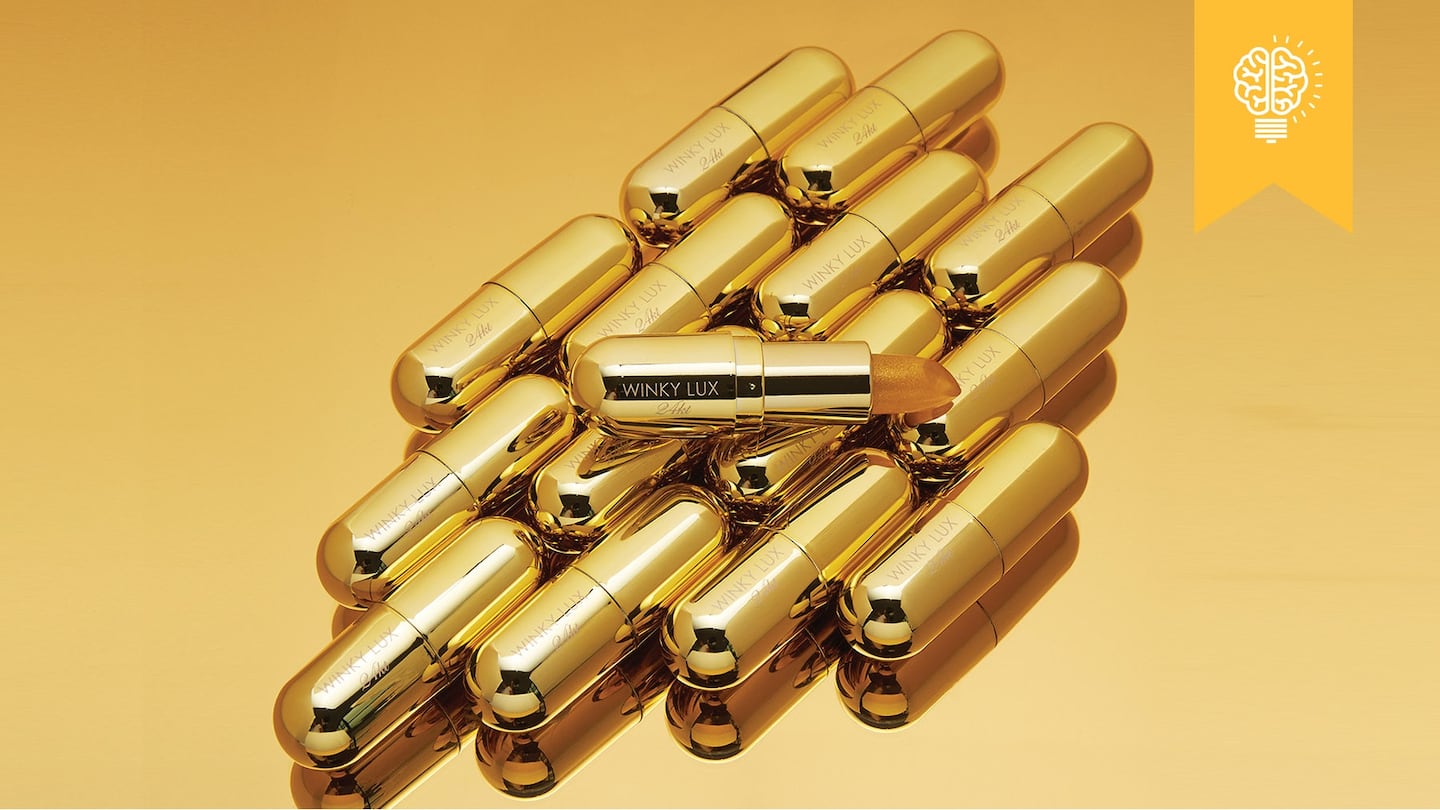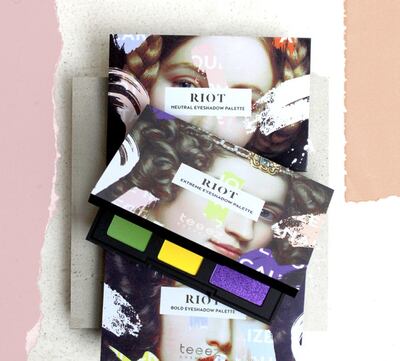
The Business of Fashion
Agenda-setting intelligence, analysis and advice for the global fashion community.

Agenda-setting intelligence, analysis and advice for the global fashion community.

LONDON, United Kingdom — Fast fashion players like Zara and H&M revolutionised the apparel market with "cheap and chic" strategies, offering stylish, on-trend clothing at low prices. With highly agile supply chains, some introduce new products bi-weekly. Beauty brands, which work with longer innovation timelines, have traditionally moved more slowly. But in a world where trends and demand for newness now move at the speed of Instagram, that's changing.
“The beauty industry is moving faster than we’ve ever seen it,” Maureen Mullen, co-founder and chief strategy officer at business intelligence firm L2, told BoF, noting that growth has been overwhelmingly driven by consumers between the ages of 18 and 24. “They’re a fairly fickle consumer who is always looking for what’s new. They’re also looking for things that are, frankly, at a lower price.”
A wave of beauty brands are now taking a page from the fast-fashion playbook, shrinking the time it takes for products to go from conception to consumer. Unlike heritage beauty brands, which often take a year or two to get a new product to market, “fast beauty” companies like Teeez, E.L.F., Glow Concept, NYX, Colourpop, The Face Shop and Kiko Milano introduce trend-led products every couple of weeks while keeping prices low.
“It got to a point where we thought: how can we offer more variety and squeeze the creative cycle to a point where we’re delivering constant newness?” said Heath Broussard, creative director at Teeez Cosmetics, which launched with a limited-edition collection of lip-glosses and nail polishes in 2004. “The brand was created as a response to offer the beauty community something more —more creation, more expression and more of a point of view.”
ADVERTISEMENT

Teeez cosmetics 'Riot' eyeshadow palette | Source: Teeez
Today the Rotterdam-based label offers a continual rotation of short-run, colour-intense makeup that includes $24 high-shine lipsticks and $28 crème highlighters. “We launch four collections a year and each is about 50 SKUs, so in a year we’re launching a total of around 200 to 250 products,” explained Broussard. Releasing limited-edition products at a high frequency allows Teeez to ensure the freshness of its assortment. This, in turn, boosts sales and results in lower markdowns. “We’ve encountered double-digit growth over the past three years. A majority of our sales are currently over the counter, but we are growing our online presence,” he added.
Oakland-based cosmetics maker E.L.F. (an acronym that stands for eyes, lips and face) constantly assesses the performance of each of the beauty items it produces. Most products are initially sold at E.L.F.’s own retail shops and online stores. If they are popular — measured by sales, reviews and social media responses — E.L.F. can accelerate production and expand distribution. If products are not performing to expectations, they are discontinued.
The company — which made its debut on the New York Stock Exchange in September 2016, only the third beauty brand to IPO in the past decade — releases new items every five to seven months. Products cost no more than $15, allowing shoppers an opportunity to try their makeup for cheap. It’s an approach that is working. Net sales soared from $83 million in 2012 to $191 million in 2015. The brand is also profitable.
Glow Concept, parent company of the digitally native Gen-Z label Winky Lux, specialises in bringing on-trend beauty products to the market quickly — generally, within 45 days. “Creative concepts and approvals are executed in 48 hours. We also have a seamless integration with our plant and have invested in technology that allows us to collaborate in real time,” explained Glow’s co-founder and chief executive, Natalie Mackey.
Glow Concept did approxomitely 6 million last year (2017) and nearly 8 million since launching two years ago.
Dubbed "Zara for cosmetics," the two-year-old business has over 50,000 direct customers and hit annual sales of approximately $6 million through December 2017, bringing the total to about $8 million since launch. Part of the brand's success is its ability to "go out there and experiment," said venture capitalist and entrepreneur Patrick Finnegan, who commended the brand at VOICES, BoF's annual gathering for big thinkers, in December.
Beauty is just as much about marketing as it is about manufacturing.
“New consumers are educated, empowered and impatient. They want — and deserve — quality products that are trending. We want to be that pop of joy for them each and every day,” said Mackey. The Winky Lux Diamond Complexion Powder is major cult favourite. Last year, the brand’s Flower and Glimmer Balms were sold every 2 minutes.
ADVERTISEMENT
“Speed-to-market is a concept that is impacting the beauty industry and it’s one of the top priorities of many brands. Indie beauty brands are typically smaller businesses, so they have better agility when it comes to responding to trends,” said Kelly Alexandre, senior analyst of consumer products at Kline, a beauty and personal care-focused research firm.
But is it ethical?
Shoppers are increasingly placing greater value on where and how their products are made. BoF and McKinsey's State of Fashion 2018 report found that sustainability is becoming "an important new driver" of consumer's purchasing decisions. Mintel's Natural, Organic and Ethical Toiletries report suggests that more than 60 percent of consumers would stop using a brand if they found it to have "unethical practices." Protecting the environment, recyclable packaging and animal welfare were all listed as top ethical issues by consumers, with 43 percent saying they would consider a brand's ethical stance before buying for the first time.

E.L.F. 3-piece 'Fresh Face' cosmetics set | Source: E.L.F.
While sales have yet to suffer, fast fashion has been sharply criticised for its ethical and environmental impact. What about fast beauty? “The reality is that any time you’re looking at launching a product with a lower price, you’re definitely cutting corners on manufacturing costs or ingredients in the product,” L2’s Mullen said.
The matter is complicated by personal safety concerns. “If you’re the sort of brand that merely buys product off a formulator and slaps branding on it, then you can be quicker to market,” said Kathy Phillips, former beauty director of British Vogue and founder of skincare brand This Works. But it's essential for fast beauty brands “to still pass stability and safety tests,” she added.
“We balance our speed with careful diligence,” said Mackey of Glow, which produces products six to 12 times faster than the industry average. On how the brand is able to achieve the rapid speed of its product innovation, Mackey said: “Abandon turn-key manufacturing; it takes too long. We create internal work-flows that emphasise speed and invest in building technology that allows you to execute them.”
“We also spend a lot of time with our manufacturing partners, innovating ideas and auditing processes, determining how to grow together. Not every factory is equipped to work with us and that’s okay,” she continued. “To compress the process while maintaining safety, our product is actively managed from start to finish.”
ADVERTISEMENT
The colour cosmetics market is also full of trendy products from large fast-fashion retailers like Forever21, Boohoo, H&M and Topshop, who all offer their own makeup lines. According to Euromonitor, Topshop and H&M's makeup division grew at 32 percent CAGR over the previous five years, along with high volume, trend-driven beauty brands like Kiko Milano, which achieved an even more impressive 39 percent CAGR.
The fast beauty phenomenon “has put a ton of pressure on traditional beauty conglomerates to really think about their innovation pipeline in a completely different way,” said Mullen.
Any time you're looking at launching a product with a lower price, you're definitely cutting corners.
“In fashion, there is a clear point of differentiation for a higher quality luxury item beyond fast fashion brands like H&M, whose quality isn’t typically up to standards. In beauty, that point of differentiation isn’t as great, because you’re dealing with products that have very different attributes,” she continued. “So the competitive advantage is even more eroded for traditional players.”
"These agile brands also play a pivotal role as established industry names squirm in the grip of a 'duping' revolution, where today's unscrupulous consumer is seeking immediate and cheaper alternatives of cult products, because either the consumer is priced out or the product is sold out," added Hannah Symons, beauty and personal care analyst at Euromonitor.
In response, some traditional beauty players have managed to boost their speed-to-market: “Maybelline’s speed-to-market used to be 12 to 18 months, but they have implemented new processes to cut down this time and certain items can now be produced in 6 to 8 months,” said Kline’s Alexandre. “Ulta is another brand that has decreased its speed-to-market from 18 months to nine months.”
Others are buying up smaller brands with nimble research and development models. L'Oréal, for instance, acquired NYX cosmetics in 2014, while Estée Lauder paid around $200 million to acquire Becca Cosmetics in 2016. But all is not lost for old-school beauty brands. According to a 2016 survey by Mintel, for every consumer who enjoys seeking out new, smaller brands on social media, there are two more who are satisfied with familiar products that they use on a regular basis.
There’s also a lot brands can do with positioning in order to stay on top of trends. When Kylie Jenner’s Kylie Lip Kit launched in November 2015 and sold out in minutes, L'Oréal-owned NYX swiftly repositioned its matt liquid lipstick as a Lip Kit dupe, achieving a 55 percent search visibility for the matt liquid lipstick. According to L2, NYX and Colourpop own the first two organic results for “matte liquid lipstick” on Google, while they, along with E.L.F., are also among the top five most visible brands online for “matte liquid lipstick.”
“Colourpop has the same products they’ve been selling for years, but they’ve changed the way they talk about them and they’re not afraid to use blatant merchandising language, which reflects against them as a prestige cult product,” said Maureen. “The thing is, beauty is just as much about marketing as it is about manufacturing.”
Related Articles:
[ Fast Fashion for the FaceOpens in new window ]
By selling existing formulas under their own name, retailers can tap into the lucrative beauty market without investing in custom formulations. But that doesn’t mean the private label model is an easy win.
The San Francisco-based company is hoping to tap growing consumer demand for financing for cosmetic treatments among other services.
Once thought of as long-term disruptors who would change the way we shop forever, multi-brand online retailers that sell cosmetics, skincare, fragrance and more are facing multiple headwinds.
Prestige makeup is fashion’s category expansion du jour. But even the market’s most powerful players could learn a thing or two from its celebrity-backed competition.